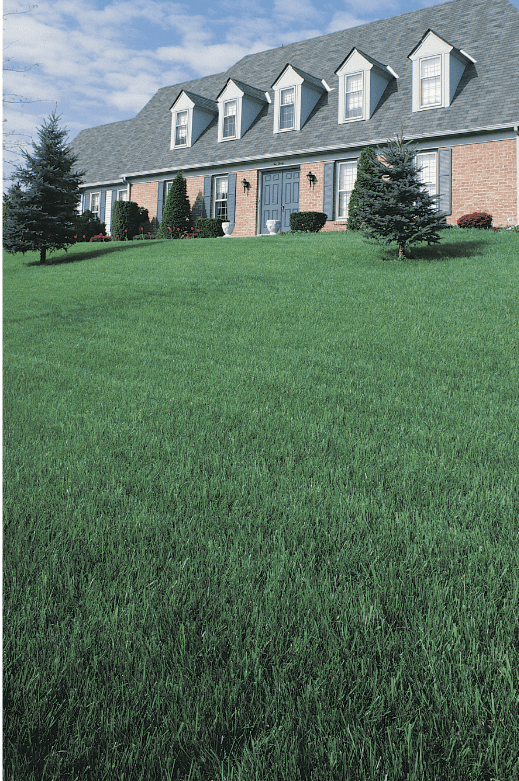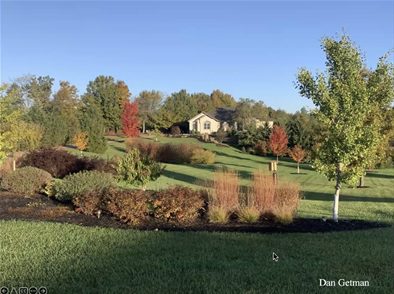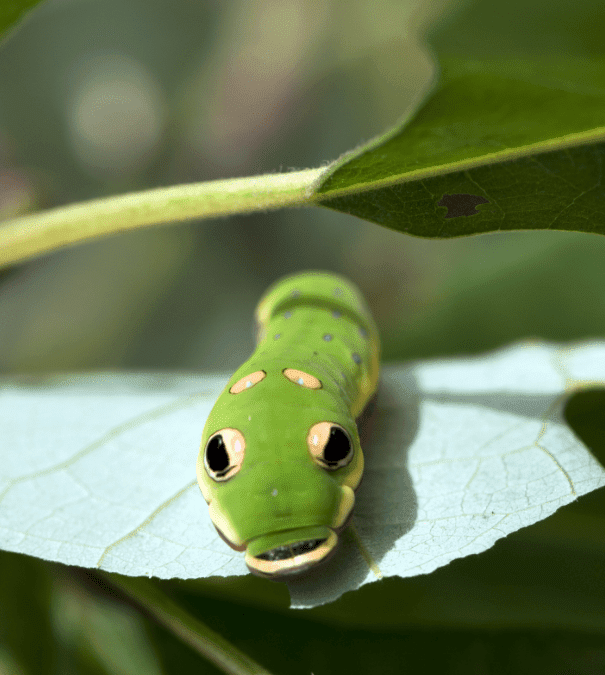If you want this adorable caterpillar in your garden, you need to include Lindera benzoin, common name Spicebush, in your landscape.
I am listening to a 6-week webinar course titled “Tending Nature: Native Plants and Every Gardener’s Role in Fostering Biodiversity.” It focuses on the ecological roles of native plants and some of the creatures that depend on them.
Last week’s speaker was Doug Tallamy, author and professor at the University of Delaware. If you are not familiar with his work, you should be! His books include:
- The Nature of Oaks: The Rich Ecology of Our Most Essential Native Trees
- Nature’s Best Hope: A New Approach to Conservation that Starts in Your Yard
- Bringing Nature Home: How You Can Sustain Wildlife with Native Plants, Updated and Expanded
- The Living Landscape: Designing for Beauty and Biodiversity in the Home Garden
In the webinar Tallamy stated “In the past, conservationists worked exclusively where people weren’t; we now need to save nature where people are.”
Theodore Roosevelt, often called “the conservation president,” used his authority to protect wildlife and public lands by creating the United States Forest Service (USFS) and establishing 150 national forests, 51 federal bird reserves, 4 national game preserves, 5 national parks, and 18 national monuments. During his presidency, he protected approximately 230 million acres of public land.

Tallamy explains that while it is wonderful to have these national parks, we are at a point where we must find ways for nature to thrive in human-dominated landscapes, not just in parks.

In a study published in Environmental Management, researchers estimate that there are 40 million acres of turf grass in the United States. It is a food desert for insects, birds and small animals, has very low ecological function and requires a great deal of maintenance.
Tallamy is proposing a Home Grown National Park network, a grassroots call-to-action to regenerate biodiversity, one garden at a time. We do that by finding ways to incorporate native plants in our existing landscapes.
Hear Tallamy’s talk: Bringing Nature Home: The Importance of Native Plants
Find what plants are native for a specific location: NWF Native Plant Finder
Read about my journey to shrink my lawn and increase biodiversity here:
Lawn to Meadow – Part I | Lake Maxinkuckee Environmental Fund
Lawn to Meadow – Part II | Lake Maxinkuckee Environmental Fund
I can’t imagine anything more important than air, water, soil, energy and biodiversity. These are the things that keep us alive.
David Suzuki

Hi, I’m Debbie Palmer. I received a BS in Horticulture from Purdue University. Here at LMEF, I am responsible for outreach presentations, monitoring the lake and it’s wetlands, project manager for restoration and research projects, and act as a community resource for all things related to the well-being of Lake Maxinkuckee and its surrounding watershed. I completed Indiana Watershed Leadership Academy, volunteer with the Indiana Clean Lakes Program, Hoosier River Watch and Marshall County Lakes and Waters and serve as a Board Member for Indiana Lakes Management Society.


Recent Comments